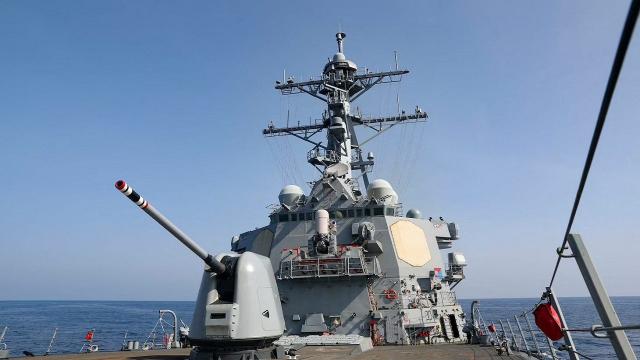A clandestine laboratory in China recently conducted a simulation, unveiling a hypothetical scenario where hypersonic missiles, aided by electronic warfare satellites, launched an attack on American warships. The startling details of the test, revealed in a December paper authored by scientist Liu Shichang, linked to a Chengdu facility with military ties, highlight the intensifying competition for dominance in space among global military powers. The simulation underscores the evolving nature of warfare tactics and the strategic importance of space in modern conflicts.

Photo from: Yahoo News
Hypersonic Missile Assault in Simulation
Chinese researchers, led by Liu Shichang, reportedly conducted a simulation where hypersonic missiles were launched from approximately 750 miles away, soaring over 120 miles into the sky before targeting U.S. warships. The simulation sheds light on China’s advancements in hypersonic missile technology and its potential applications in future conflicts.
Liu Shichang emphasized the historical significance of the commanding height in warfare, stating that space has become a new battleground fiercely contested by military powers worldwide. Integrating space-based assets, such as electronic warfare satellites, into simulated attacks showcases the strategic importance of space in shaping the outcome of conflicts.
In the computer-simulated assault, Chinese hypersonic missiles collaborated with low-orbit electronic warfare satellites positioned above American ships. These satellites, detecting radar signals from U.S. vessels, deployed countermeasures by generating background noise, masking the missiles’ locations. The coordination between missiles and satellites demonstrates the sophistication of China’s space-based military capabilities.
READ ALSO: Nokia Cuts Ties: Exit From Telecom Venture With Huawei Signals Escalating US-China Tensions
Concerns and Implications for Space Warfare
As the missiles approached within 30 miles of their targets, the satellites completed their suppression mission, activating missile-borne jammers. The rockets then executed terminal maneuvers to enhance penetration and destroy the intended targets. The simulation highlights the intricate tactics employed to overcome U.S. detection capabilities and penetrate defense systems.
The paper assessed U.S. detection capabilities, referencing the SPY-1D radar developed by Lockheed Martin and used in Navy Arleigh Burke-class destroyers. The suggestion that only two or three low-orbit satellites could potentially target an aircraft carrier group raises concerns about the vulnerability of modern naval forces to space-based attacks. The simulation prompts a broader discussion about the implications of space warfare and the need for enhanced defense measures.
READ ALSO: Navigating Big Power Rivalry: Asean’s Playbook In Managing US-China Tensions
















































